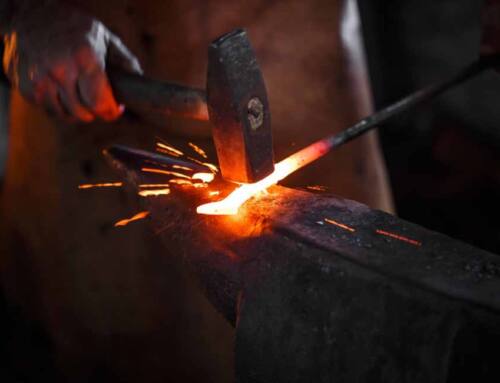In the realm of weapons, there are two general areas in which all weapons can be categorized: lethal and less than lethal or pain compliance tool.
On the lethal side are the weapons that can cause death but are not “weapons of mass destruction.” Although there are many exceptions, these conventional arms typically include small or light arms, mines, cluster munitions and small rockets, missiles and shells.
The less than lethal side is where police officers – and individuals concerned with self-defense – can find a varied list of options. These weapons, also known as a pain compliance tool, are designed to minimize the risks of fatal injuries while also limiting or eliminating the escalation of violence.
These weapons can include electroshock, gases, sprays, directed energy, water cannons and bullets made of rubber, wax, and plastic. This category also includes specialty knives, such as the Krudo Knives SNAG self-defense tool.
Development and Use of the Pain Compliance Tool & Weapons
Pain compliance weapon were developed by law enforcement and military personnel for situations were lethal force is not warranted or desired. They are referred to as pain compliance or less than lethal weapons – rather than non-lethal – because death, while unlikely, can occur in some cases (pre-existing health conditions, for example, or severe intoxication).
An example would be the use of tear gas to disperse a rioting crowd, or pepper stray used to disable an opponent in a hand-to-hand combat situation. In the case of the military, the development of less than lethal weapons became a necessity – guards at embassies, for example, were often reduced to carrying unloaded weapons.
This unacceptable situation has been an area of focus for the United States government since at least the late 1980s. Some weapons developed by the military include: the Active Denial System (a microwave beam capable of heating and causing pain on a target); green lasers that impact vision from a great distance; and acoustic hailing devices that use sound to disrupt the target.
Hand to Hand Pain Compliance Tools
The majority of less than lethal weapons have been developed for use by local law enforcement for both hand-to-hand situations or for crowd control. Crowd control can still include water cannons, which have been used for decades, tear gas, rubber bullets and flexible baton rounds (known as “bean bags”).
But hand-to-hand is where there is a large variety. In addition to tasers, perhaps the best known less than lethal weapon, there are many others used not only by police but individuals.
Specialty knives. These typically unsharpened knives can be used to neutralize an opponent without serious injury. An example is Krudo Knives SNAG self-defense tool, which features an unsharpened stonewash blade with a thumb ramp and 6061 T6 handle and stainless steel frame lock handle with a finger ring. Properly used, the blade causes pain and will deter an opponent without inflicting lethal harm.
Light. Many officers and individuals have started to utilize intense light beams to disorient or briefly incapacity an opponent. Light can be used to overwhelm and confuse an opponent – if properly used, an opponent will not know exactly where you are until it is too late.
Pepper spray. Long advertised as a good weapon for women to use against assaulters, pepper spray is an effective way to stop an attacker. The active ingredient – oleoresin capsicum – is derived from the cayenne pepper plant.
Mace. Another effective self-defense weapon, mace products can include pepper spray and various other chemical formulas, including phenacyl chloride. As with pepper spray, the idea is cause a skin irritation, pain or (if used in the eyes) temporary loss of vision.
Conducted electrical weapons. These directed energy weapons fire electronic impulses that disrupt brain-body communication, leading to a brief loss of muscle control and motor skills for the opponent.
Blunt force projectiles. These weapons typically fire a bullet that is made of rubber or, in recent years, the use of a “bean bag” that disperses some type of blunt projectile.
There are many situations where there is opponent who needs to be stopped but lethal force is not warranted or wanted. Whichever less than lethal weapon is used, there are many good choices not only for law enforcement but also for individuals who are interested in self-defense but not inflicting permanent harm.







Leave A Comment